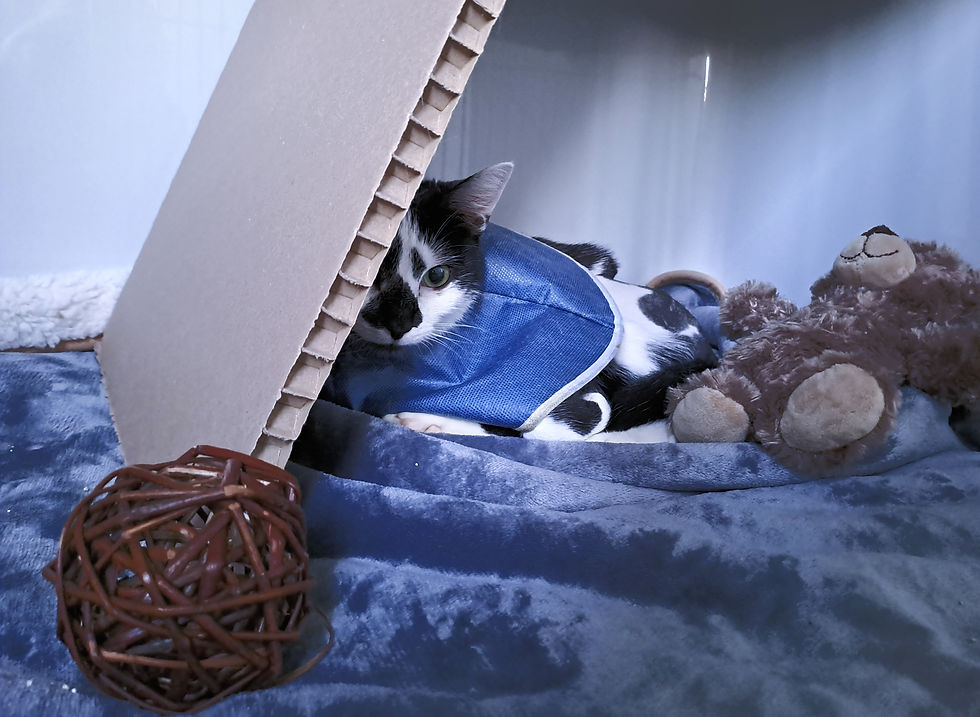Environmental enrichment for convalescent cats: Practical tips for a healing-promoting daily routine
- PhysiON Care

- Jul 2
- 2 min read
Cats recovering from illness, injury, or surgery who must spend extended periods of time in confined space need more than just rest and medication—they also need mental stimulation and emotional support.

A well-designed environment can reduce stress, promote healing, and significantly improve the cat's well-being.
Since every cat is unique, there are no hard and fast rules – but there are tried and tested measures that can be easily implemented even in small spaces:
1. Safety is everything: Retreats with structure
Resting places should be quiet, comfortable and equipped with familiar materials.
Hiding places such as boxes with a side entrance offer security and an overview.
Important resources such as food, water, toilet, sleeping area and scratching opportunities should be separated from each other and positioned so that they are easily accessible.
2. Gentle environment = relaxed cat
Keep noise levels below 60 dB (e.g. quiet conversations, calming music).
Lighting conditions with natural day-night cycles promote rhythm.
Odor control: Avoid strong scents from cleaners, smoke, perfume or the smell of strange animals – fresh air supports regeneration.
3. Sensory stimulation – but with sensitivity
Textiles with a familiar smell (e.g. worn T-shirt, blanket) have a calming effect.
Sniffing mats with dry food or treats encourage natural curiosity.
Cat grass or valerian pillows can be used carefully if necessary.
Feliway® diffuser: Synthetic pheromones help strengthen emotional stability.
Window seats with a view allow for visual stimulation without physical strain.

4. Rituals create trust
Fixed feeding times and locations provide security.
Bowl positions should also remain as constant as possible.
5. Humans as a constant – but in a cat-like way
Gentle rituals such as quiet reading, speaking softly or gently stroking promote bonding – but only if the cat allows it.
Short daily visits from the same trusted person convey reliability.
6. Working with moderation: Movement in small ways
Target training while lying down, e.g. with a stick or spoon with liver sausage, stimulates controlled movement.
Searching for treats in a rolled up towel is a calm, rewarding activity.
Self-entertainment toys with a moderate level of difficulty, such as snack balls or soft toy mice, provide variety.
7. Recognize signals
Is the cat lying in the litter box for an unusually long time?
Is she eating less, is she apathetic or suddenly aggressive?
Such changes in behavior may indicate stress or pain – do not hesitate to seek veterinary advice.
Conclusion
An enriched environment doesn't mean "more stimuli," but rather more tailored offerings . Give your cat choices, familiar rituals, and a loving atmosphere—this way, even a period of rest can become a positive experience.
💡 Tip for caregivers: Always offer new stimuli as an option, not a requirement . Observe what appeals – and remove what overwhelms. Rest periods also deserve respect.
Any questions or more tips? Then feel free to contact us – we'll be happy to advise you with heart and paw.




Comments